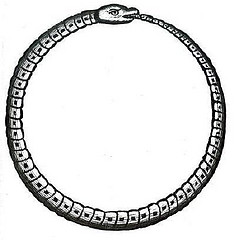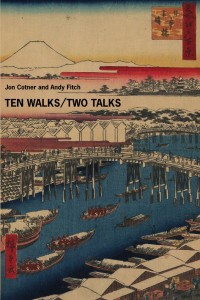“If more than ten percent of the population likes a painting, it should be burned.
Said Shaw.”
— from David Markson’s The Last Novel, p. 68
Quotation Marks
 Do you use quotation marks when writing dialogue? Why? Why not?
Do you use quotation marks when writing dialogue? Why? Why not?
I find myself justifying their use or non-use with some regularity. Sometimes, I use them. Sometimes, I don’t. When I don’t, I don’t for the aesthetic value and/or because I find it disrupts the text. When I do, I do because I feel like it. And for no other reason. Only rarely does it have anything to do with grammar or clarity.
Back Flash: Daniil Kharms
(Cartier-Bresson)
People sometimes scoff flash fiction by noting its recent flabelliform of popularity. I occasionally refute by bringing past authors of flash to the now. I hope you may one day gather this feature and create a joiner’s mallet.
Enter Daniil Kharms.
He felt cause and effect were funny, buy not ha-ha funny. I once thought serious silliness the only real answer to life (but I digress), so was/am happy the day I stumbled upon Kharms. Automatic and lifeless makes us into a thing. This is good or bad?
Excellent site here of his work.
Here is a flash for you, titled, “How a Man Crumbled.”
– They say all the best tarts are fat-arsed. Gee-ee, I really like busty tarts, I love the way they smell.
Having said this, he started to increase in height and, upon reaching the ceiling, he crumbled into a thousand little pellets. The yard-keeper Panteley came, swept all these pellets up into his scoops in which he usually picked up the horse muck, and he carried these pellets away somewhere to the back yard.
And the sun continued to shine as ever and splendiferous ladies continued to smell just as ravishingly as ever.
You may know the backstory of Ben Marcus’s book The Age of Wire and String—that it was written with the help of Stith Thompson’s Motif Index of Folk-Literature. Did you know the entire thing is online? If so, why the fuck didn’t you tell me?
A tail of two books, are there others?
 aims to celebrate and mimic the cyclical continuum of both Finnegan’s Wake, its first line being riverrun, past Eve and Adams, from swerve of shore to bend of bay and last line A way a lone a last a loved along the (duh — “along the riverrun,” pay attention) and the first and last lines of Pale Fire, Nabokov’s novel named after a “fictional” poem by John Shade: (first) I was the shadow of the waxwing slain/ By the false azure in the windowpane and (last) Some neighbor’s gardener, I guess — goes by/ Trundling an empty barrow up the lane wherein the lines are composed to predetermine the first in a never ending fateful loop like this post
aims to celebrate and mimic the cyclical continuum of both Finnegan’s Wake, its first line being riverrun, past Eve and Adams, from swerve of shore to bend of bay and last line A way a lone a last a loved along the (duh — “along the riverrun,” pay attention) and the first and last lines of Pale Fire, Nabokov’s novel named after a “fictional” poem by John Shade: (first) I was the shadow of the waxwing slain/ By the false azure in the windowpane and (last) Some neighbor’s gardener, I guess — goes by/ Trundling an empty barrow up the lane wherein the lines are composed to predetermine the first in a never ending fateful loop like this post
Two From Letter Machine Editions

 Two handsome looking new full-lengths from Letter Machine Editions: Iowa, a crow-dark novel by Travis Nichols, and Texture Notes, a sort of glassblower’s cartographic adventure by Sawako Nakayasu. These are available together and right away at a discount. With these books and other books available or forthcoming from Anselm Berrigan, Renne Gladman, Farid Matuk, Sara Veglahn, John Yau, Julianna Leslie, Aaron Kunin and Peter Gizzi, Letter Machine Editions definitely looks like a smelter to watch. Here’s a random bit from Iowa to give you a zing:
Two handsome looking new full-lengths from Letter Machine Editions: Iowa, a crow-dark novel by Travis Nichols, and Texture Notes, a sort of glassblower’s cartographic adventure by Sawako Nakayasu. These are available together and right away at a discount. With these books and other books available or forthcoming from Anselm Berrigan, Renne Gladman, Farid Matuk, Sara Veglahn, John Yau, Julianna Leslie, Aaron Kunin and Peter Gizzi, Letter Machine Editions definitely looks like a smelter to watch. Here’s a random bit from Iowa to give you a zing:
The memories true or not against him seem to be turning to steam, as I turned, all the while thinking of chewing out alone eventually through the ghostly meats … Multiple murders of crows in the budding trees waiting to send the lilac sky to black, or every once in a while to bend remembrance gone on at the waist into coughing too long into the night.
Another Something Happening for You City Folk
 I know there’s never anything going on in NYC, but tomorrow night it looks like there’s an exception. Certainly it’s something I would attend if I wasn’t four hours away: the release party for Jon Cotner and Andy Fitch’s book, 10 Walks/2 Talks, now published by Ugly Duckling Presse.
I know there’s never anything going on in NYC, but tomorrow night it looks like there’s an exception. Certainly it’s something I would attend if I wasn’t four hours away: the release party for Jon Cotner and Andy Fitch’s book, 10 Walks/2 Talks, now published by Ugly Duckling Presse.
At McNally Jackson Booksellers in Soho — 52 Prince St
7pm
Here is the Time Out NY write-up.
This book looks to be fantastic. Definitely a great cover of 2009 (my post on this is forthcoming, late). The concept for the writing is that Jon and Andy walked around Manhattan and talked about stuff. I had the privilege of running one of their talks in Everyday Genius (read it).
They seem like pretty cool guys.
A list of remembrances of writers who passed in the 00s, by other writers, including one of David Foster Wallace by George Saunders, plus JG Ballard, Susan Sontag, Grace Paley, W.G. Sebald, many others, at the Guardian.
“It’s often a distraction.”

I want to point out that responding to depiction and illustration often involves something apart from the formal characteristics of painting. It’s often a distraction. On the other hand, purely formal characteristics exercise the senses as do string quartets, piano concertos, Dixieland. Because of this the representation I’m interested in is of those things only the eye can touch.
Classic Word Spaces (6): Ernest Hemingway
Yesterday I spent a few hours in the Ernest Hemingway Home & Museum and got to see the room where he wrote more than half of his work, though he only lived there for about ten years on and off . His routine was to wake up at six am and work until he had 700 words or it was time for lunch. Then he went out to fish until happy hour and then he drank until he was tired. That was how he wrote most of his books. His writing room was only accessible via a catwalk from the main house, and no one ever went in there except for him. (It is now my life’s goal to have a private writing room only accessible by catwalk or maybe a ladder and fireman’s pole or maybe a zipline.)


